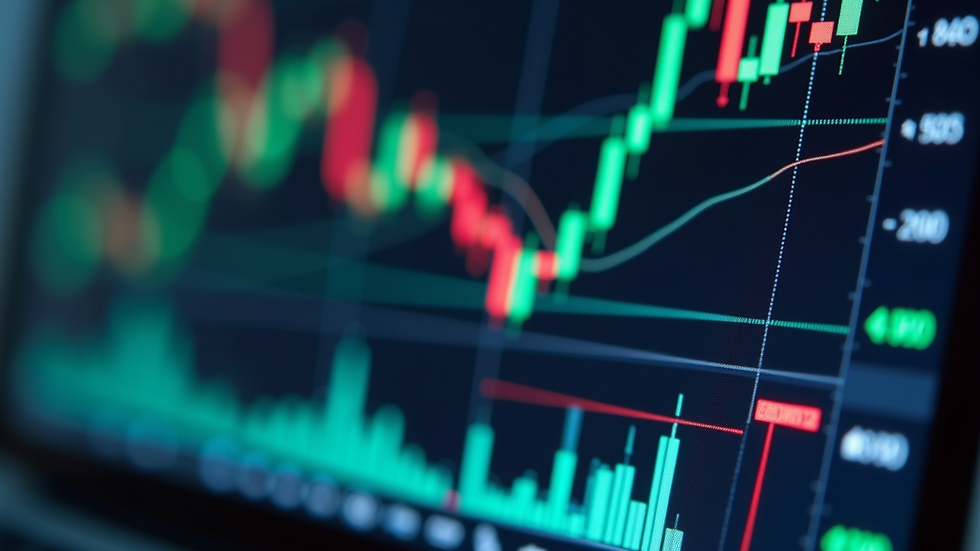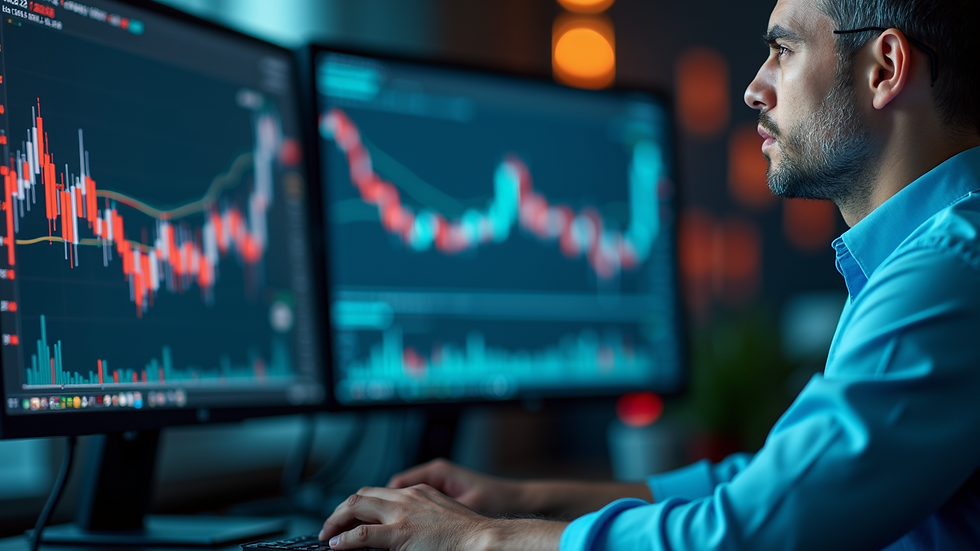Exploring Trends in the Global Forex Market
- forex368

- Sep 4
- 4 min read
The global forex market is a dynamic and ever-evolving space where currencies are traded around the clock. Understanding the latest trends in this market is crucial for traders and investors who want to make informed decisions. This article delves into the current movements shaping the forex market, providing practical insights and actionable recommendations to navigate this complex environment effectively.
Understanding the Current Forex Market Landscape
The forex market is the largest financial market in the world, with a daily trading volume exceeding $6 trillion. It operates 24 hours a day, five days a week, allowing participants from all over the globe to engage in currency trading. Recent trends have been influenced by geopolitical events, economic data releases, and central bank policies.
One significant trend is the increased volatility caused by global economic uncertainties. For example, trade tensions between major economies and fluctuating commodity prices have led to sharp currency movements. Traders need to stay updated on these developments to anticipate market reactions.
Another important aspect is the rise of algorithmic trading and artificial intelligence in forex. Automated systems can analyse vast amounts of data quickly, executing trades based on predefined criteria. This technology has increased market efficiency but also introduced new challenges, such as flash crashes.
To succeed in this environment, traders should focus on risk management strategies, including setting stop-loss orders and diversifying their portfolios. Staying informed through reliable sources and continuous learning is essential.

Key Factors Driving the Forex Market Today
Several factors currently drive the forex market, shaping currency values and trading volumes. Understanding these drivers helps traders anticipate market trends and make better decisions.
Central Bank Policies
Central banks play a pivotal role by setting interest rates and implementing monetary policies. For instance, when a central bank raises interest rates, its currency often strengthens due to higher returns on investments denominated in that currency. Conversely, rate cuts can weaken a currency.
Economic Indicators
Data such as GDP growth, employment figures, and inflation rates influence currency values. Strong economic performance typically boosts a currency, while weak data can lead to depreciation.
Geopolitical Events
Political instability, elections, and international conflicts can cause uncertainty, leading to increased volatility. Traders often seek safe-haven currencies like the US dollar or Swiss franc during turbulent times.
Market Sentiment
Investor confidence and risk appetite affect currency demand. Positive sentiment can drive riskier currencies higher, while negative sentiment increases demand for safer assets.
Technological Advancements
Innovations in trading platforms and data analytics tools have transformed how forex trading is conducted, making it more accessible and efficient.
By monitoring these factors, traders can develop strategies that align with current market conditions.

What is the 5-3-1 Rule in Forex?
The 5-3-1 rule is a popular trading guideline designed to help forex traders manage risk and improve decision-making. It breaks down as follows:
5: Identify five potential trade setups based on your analysis.
3: Narrow these down to the three most promising trades.
1: Execute only one trade from the shortlisted options.
This rule encourages discipline and focus, preventing traders from overtrading or chasing too many opportunities simultaneously. It also helps in prioritising quality over quantity, which is essential in a volatile market.
For example, a trader might scan the market and find five currency pairs showing potential entry points. After evaluating factors like trend strength, support and resistance levels, and economic news, they select three pairs with the highest probability of success. Finally, they choose the single best trade to execute, ensuring they allocate their capital wisely.
Implementing the 5-3-1 rule can reduce emotional trading and improve overall performance by fostering a structured approach.
Emerging Technologies Shaping Forex Trading
Technology continues to revolutionise the forex market, offering traders new tools and opportunities. Some of the most impactful advancements include:
Artificial Intelligence (AI) and Machine Learning
AI algorithms analyse historical data and market patterns to predict price movements. These systems can adapt to changing conditions, providing traders with valuable insights.
Blockchain and Cryptocurrencies
Blockchain technology enhances transparency and security in transactions. Additionally, cryptocurrencies have introduced new trading pairs and investment options within the forex ecosystem.
Mobile Trading Platforms
The rise of smartphones has made forex trading more accessible. Traders can now monitor markets and execute trades anytime, anywhere.
Social Trading Networks
Platforms that allow traders to follow and copy the strategies of experienced investors have gained popularity. This democratizes access to forex trading knowledge.
To leverage these technologies effectively, traders should combine them with sound fundamental and technical analysis. Staying updated on technological trends is also crucial for maintaining a competitive edge.

Practical Tips for Navigating the Forex Market
Navigating the forex market successfully requires a combination of knowledge, strategy, and discipline. Here are some practical tips to help traders improve their performance:
Develop a Trading Plan
Define your goals, risk tolerance, and preferred trading style. A clear plan helps maintain focus and consistency.
Use Risk Management Tools
Always set stop-loss and take-profit levels to protect your capital. Never risk more than a small percentage of your account on a single trade.
Stay Informed
Follow economic calendars, news releases, and expert analyses. Reliable sources of forex trading insights can provide valuable information.
Practice with Demo Accounts
Before committing real money, use demo accounts to test strategies and build confidence.
Keep Emotions in Check
Avoid impulsive decisions driven by fear or greed. Stick to your trading plan and review your trades regularly.
Continuous Learning
The forex market is constantly changing. Invest time in learning new techniques and understanding market dynamics.
By applying these tips, traders can enhance their chances of success and build a sustainable trading career.
Looking Ahead: The Future of Forex Trading
The forex market will continue to evolve as new trends and technologies emerge. Increased regulation, greater transparency, and the integration of AI are expected to shape the future landscape. Traders who adapt to these changes and embrace innovation will be better positioned to capitalise on opportunities.
Moreover, the growing interest in sustainable and ethical investing may influence currency markets, as countries with strong environmental policies attract more investment.
Staying agile and informed is key to thriving in the global forex market. By combining traditional analysis with modern tools and strategies, traders can navigate the complexities of this market with confidence.
Exploring the global forex market reveals a landscape rich with opportunities and challenges. Understanding current trends, applying disciplined strategies like the 5-3-1 rule, and leveraging technological advancements can empower traders to make smarter decisions. Continuous learning and risk management remain the cornerstones of success in this fast-paced environment.




